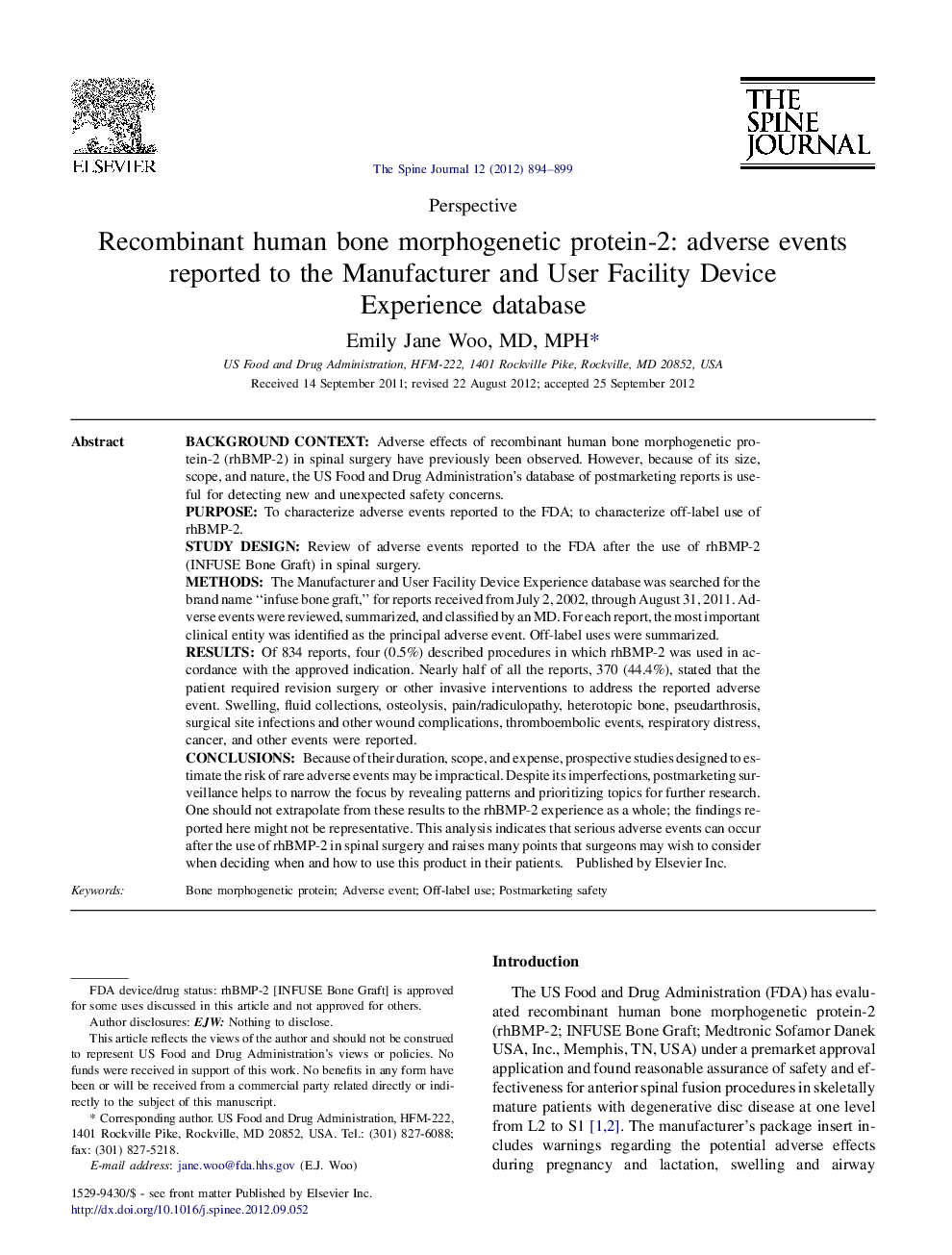| Article ID | Journal | Published Year | Pages | File Type |
|---|---|---|---|---|
| 4097416 | The Spine Journal | 2012 | 6 Pages |
Background contextAdverse effects of recombinant human bone morphogenetic protein-2 (rhBMP-2) in spinal surgery have previously been observed. However, because of its size, scope, and nature, the US Food and Drug Administration’s database of postmarketing reports is useful for detecting new and unexpected safety concerns.PurposeTo characterize adverse events reported to the FDA; to characterize off-label use of rhBMP-2.Study designReview of adverse events reported to the FDA after the use of rhBMP-2 (INFUSE Bone Graft) in spinal surgery.MethodsThe Manufacturer and User Facility Device Experience database was searched for the brand name “infuse bone graft,” for reports received from July 2, 2002, through August 31, 2011. Adverse events were reviewed, summarized, and classified by an MD. For each report, the most important clinical entity was identified as the principal adverse event. Off-label uses were summarized.ResultsOf 834 reports, four (0.5%) described procedures in which rhBMP-2 was used in accordance with the approved indication. Nearly half of all the reports, 370 (44.4%), stated that the patient required revision surgery or other invasive interventions to address the reported adverse event. Swelling, fluid collections, osteolysis, pain/radiculopathy, heterotopic bone, pseudarthrosis, surgical site infections and other wound complications, thromboembolic events, respiratory distress, cancer, and other events were reported.ConclusionsBecause of their duration, scope, and expense, prospective studies designed to estimate the risk of rare adverse events may be impractical. Despite its imperfections, postmarketing surveillance helps to narrow the focus by revealing patterns and prioritizing topics for further research. One should not extrapolate from these results to the rhBMP-2 experience as a whole; the findings reported here might not be representative. This analysis indicates that serious adverse events can occur after the use of rhBMP-2 in spinal surgery and raises many points that surgeons may wish to consider when deciding when and how to use this product in their patients.
